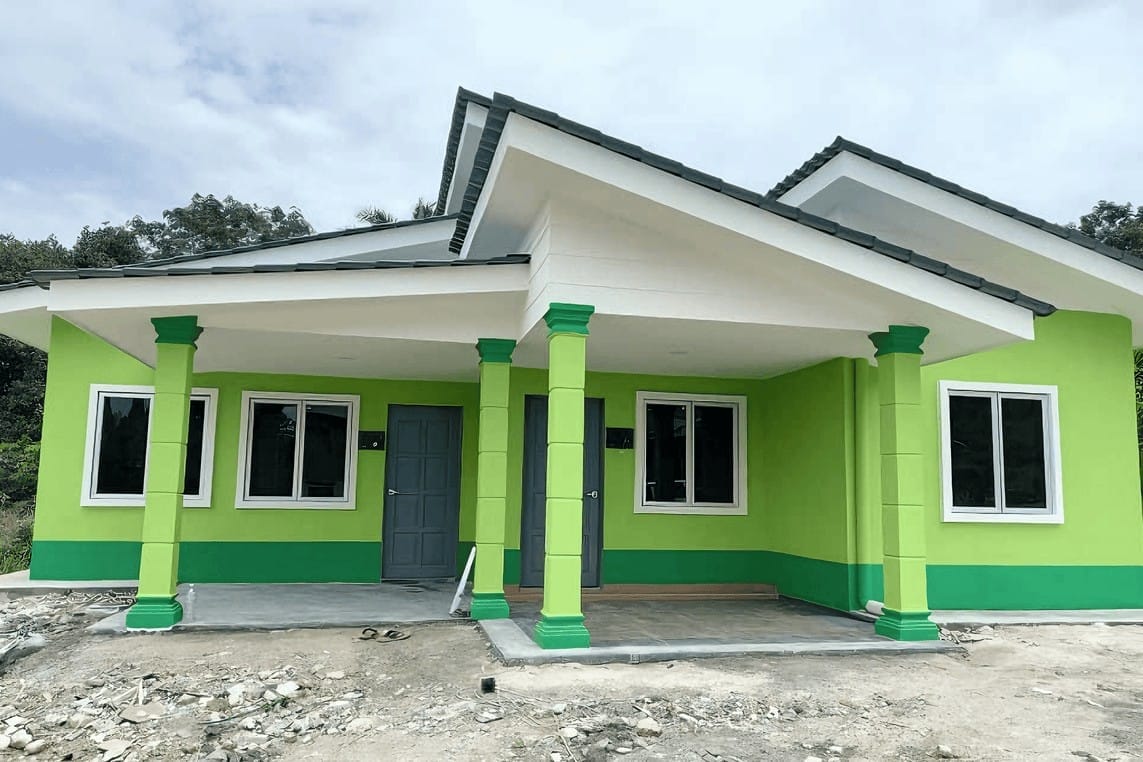In a world where construction and renovation projects often represent significant financial and emotional investments, choosing the right contractor can make all the difference between a seamless experience and a nightmare. Whether you’re embarking on a minor home improvement, tackling a major remodel, or building your dream home from the ground up, the contractor you select will play a pivotal role in determining the outcome of your project. With a myriad of options available, the quest to find an experienced and trusted contractor can be daunting.
This article serves as your compass in navigating the intricate landscape of contractor selection. We will explore essential qualities to look for, effective strategies to vet potential candidates, and vital questions to ask during the hiring process. By highlighting best practices and potential pitfalls, we aim to equip you with the knowledge needed to make an informed decision that aligns with your unique needs and aspirations. Join us as we delve into the essential steps to choose a contractor who not only embodies expertise but also earns your trust—the cornerstone for a successful partnership in bringing your vision to life.
Identifying Qualifications and Credentials for Ideal Contractors
When embarking on a project with a contractor, it’s essential to establish a clear understanding of their qualifications and credentials. Start by verifying their licenses and registrations, as these are often a legal requirement that demonstrates compliance with industry standards. Depending on the type of work, this may include specific trade licenses, general contractor licenses, or specialty certifications. Additionally, consider checking if they hold any relevant memberships in professional organizations, as these affiliations can indicate a commitment to ongoing education and ethics in the industry.
Experience is another crucial factor to evaluate. Look for contractors who have a strong portfolio, showcasing their previous work. This not only confirms their skill set but also offers insight into their style and quality of craftsmanship. When reviewing their portfolio, consider the following aspects:
- Variety of past projects – Have they worked on projects similar to yours?
- Client testimonials - Are previous clients satisfied with their work?
- Project completion timeliness – Do they consistently meet deadlines?
Additionally, seek out contractors with solid insurance policies. General liability and workers’ compensation insurance are essential to protect both you and the contractor in case of accidents or damages during the project. To simplify your assessment, you might want to use a comparison table like the one below to evaluate multiple contractors based on these qualifications:
| Contractor Name | License Status | Years of Experience | Insurance Coverage |
|---|---|---|---|
| Contractor A | Active | 10 Years | Yes |
| Contractor B | Pending | 5 Years | No |
| Contractor C | Active | 15 Years | Yes |

Evaluating Past Work and Client Testimonials for Reliability
When selecting a contractor, assessing their historical work is crucial for ensuring quality and dependability. Start by examining their portfolio, which should showcase a variety of completed projects. Consider factors such as:
- Types of projects undertaken
- Quality of craftsmanship
- Timeliness of completion
Having a visual representation of their work can provide insights into their expertise and help gauge whether their style aligns with your vision.
Client testimonials can serve as a reliable gauge of a contractor’s credibility and professionalism. Seek out feedback from previous clients to understand their experiences. Look for:
- Specific praises about the contractor’s communication
- Insights regarding problem-solving abilities
- Feedback on adherence to budgets and timelines
Positive reviews and detailed testimonials can highlight a contractor’s strengths and shed light on any potential red flags. Websites and social media platforms can be great resources for gathering honest client feedback.
To further illustrate the importance of testimonials, consider creating a simple comparison table of contractors based on client satisfaction ratings. Here’s a sample format:
| Contractor Name | Client Rating | Project Type |
|---|---|---|
| Elite Builders | 4.8/5 | Residential |
| Reliable Renovations | 4.5/5 | Commercial |
| Home Improvements Co. | 4.6/5 | Remodeling |
This kind of structured approach not only helps in making informed choices but also provides a more comprehensive view of each contractor’s capabilities and reputation. Ultimately, thorough evaluations of past work and client testimonials will empower you to choose a contractor who is both experienced and trustworthy.

Understanding Contracts and Pricing Structures with Transparency
When embarking on a project, it’s essential to delve into the intricacies of contracts and pricing structures. A well-defined contract serves as the backbone of any agreement, laying out the expectations and responsibilities for both parties involved. It’s crucial to ensure that the terms are clear and concise, reducing the potential for misunderstandings. Look for contracts that include:
- Detailed Scope of Work: A comprehensive outline of what the contractor will provide.
- Payment Terms: Clear definitions regarding deposits, progress payments, and final amounts.
- Timeline for Completion: Specific deadlines for milestones and final project delivery.
Equally important is the pricing structure. A transparent pricing model helps prevent hidden costs and ensures that you understand precisely what you’re paying for. Request a breakdown of costs that separates labor, materials, and overhead to gain better insight into how the total price is derived. Consider the following components that should be included in any pricing discussion:
- Material Estimates: Itemized lists of materials including brands, specifications, and costs.
- Labor Rates: Clear hourly rates or fixed quotes based on the project scope.
- Contingency Fees: Any additional fees that may arise during the project, explained upfront.
To further enhance clarity, some contractors offer pricing tables that outline various packages or options. This can simplify the decision-making process and align your budget with the services you need. Below is an example of a simplified pricing table:
| Service Package | Description | Price |
|---|---|---|
| Basic | Includes consultation, design, and basic materials | $2,000 |
| Standard | All Basic services plus advanced materials and labor | $5,000 |
| Premium | All Standard services with premium finishes and warranties | $10,000 |

Building a Rapport and Trust for a Successful Collaboration
Establishing a foundation of understanding is crucial when embarking on a collaboration with a contractor. To foster a positive relationship, consider engaging them in open discussions about your project’s vision and goals. This dialogue not only clarifies expectations but also serves to align both parties on shared objectives. Effective communication can minimize misunderstandings and pave the path for a smoother workflow.
Creating an atmosphere of trust encourages a cooperative spirit that can significantly impact the success of your endeavor. A few strategies to enhance trust include:
- Consistent Communication: Maintain regular updates and feedback loops to stay connected.
- Transparency: Share challenges and seek input from the contractor, fostering a sense of partnership.
- Respect Their Expertise: Acknowledge their skills and insights, valuing what they bring to the table.
To further strengthen your collaboration, consider outlining clear roles and responsibilities within a structured framework. Utilizing a simple table can help define each party’s contributions and timelines, ensuring everyone is on the same page:
| Party | Role | Responsibility | Timeline |
|---|---|---|---|
| Client | Project Owner | Provide vision and feedback | Ongoing |
| Contractor | Execution Lead | Manage project delivery | Phase-based |
By clarifying expectations and embracing collaborative dialogue, you position both parties to work harmoniously, ensuring that the project is handled efficiently and effectively. This groundwork will not only help in achieving your current goals but will also lay the basis for potential future collaborations.
Q&A
Q&A: How to Choose an Experienced and Trusted Contractor
Q1: Why is it important to choose an experienced contractor?
A1: Choosing an experienced contractor is crucial because they bring a wealth of knowledge to the table. Their familiarity with different types of projects helps anticipate challenges and avoid common pitfalls. An experienced contractor is likely to have refined their skills through years of practice, which can translate to higher quality work and better project outcomes.
Q2: What criteria should I consider when evaluating a contractor’s experience?
A2: When evaluating a contractor’s experience, consider their years in business, the types of projects they’ve completed, and their expertise in specific areas related to your project. Additionally, ask about their team—are subcontractors involved, and what are their experiences? Certifications and training can also indicate a commitment to quality and safety.
Q3: How can I verify a contractor’s reputation in my community?
A3: Start by seeking referrals from friends, family, or neighbors who have recently undertaken similar projects. Online reviews and ratings on platforms like Google, Yelp, or Angie’s List can provide insights into other customers’ experiences. Additionally, checking with local trade organizations or the Better Business Bureau can help verify whether the contractor has a solid reputation in your community.
Q4: What documents should I ask for to ensure the contractor is trustworthy?
A4: You should request the contractor’s license, insurance coverage, and any relevant certifications. A reliable contractor should provide proof of general liability insurance and workers’ compensation coverage to protect you from potential liabilities. Additionally, ask for past project references; a trustworthy contractor should be willing to share contact information for previous clients.
Q5: How can I assess the contractor’s communication skills during our initial interactions?
A5: Observe how quickly they respond to your inquiries and how clearly they convey information. A good contractor should listen attentively to your needs and provide thoughtful feedback. Pay attention to whether they offer detailed explanations of their processes, timelines, and any potential challenges, showing they value transparency and open communication.
Q6: Is it wise to get multiple quotes, and how should I compare them?
A6: Yes, obtaining multiple quotes is a smart strategy. It allows you to gauge the average cost of the project and identifies potential red flags, such as significantly lower bids that could suggest subpar quality. When comparing quotes, look beyond the price—consider what each contractor includes in their proposal in terms of materials, labor, timeline, and warranty. The lowest cost doesn’t always mean the best value.
Q7: What role does a written contract play in ensuring I choose the right contractor?
A7: A written contract is essential for setting clear expectations and protecting both parties. It details the scope of work, materials, payment schedule, and timelines, minimizing the risk of misunderstandings later on. Ensure the contract is comprehensive and that you both agree on every aspect before work begins. A trustworthy contractor will appreciate the necessity of a formal agreement.
Q8: How can I ensure the contractor stays accountable throughout the project?
A8: Establish regular check-ins and progress updates as part of your agreement. Discuss a schedule for on-site meetings and ask how they handle time management and workflows. A reliable contractor should welcome your involvement and be transparent about any issues that arise, allowing you to address concerns promptly.
By thoughtfully addressing these questions, you can navigate the contracting process with greater confidence, ensuring that your project is handled by an experienced and trustworthy professional.
Final Thoughts
In the ever-evolving landscape of home improvement and construction, finding the right contractor can feel akin to searching for a needle in a haystack. However, armed with the insights and strategies outlined in this article, you can confidently navigate this critical decision-making process. Remember, an experienced and trusted contractor is more than just a skilled tradesperson; they are your partner in realizing your vision. Take the time to research, ask the right questions, and trust your instincts. By prioritizing transparency, communication, and a solid track record, you will not only enhance the outcome of your project but also enjoy a smoother, more enjoyable renovation journey. May your search yield a collaborator who not only meets your expectations but exceeds them, turning your dreams into reality, one nail at a time.


